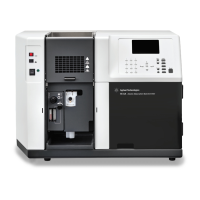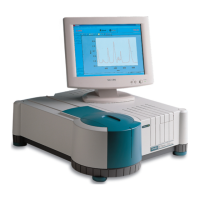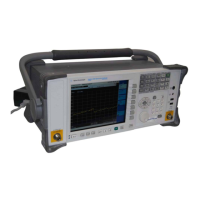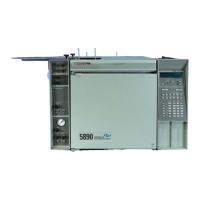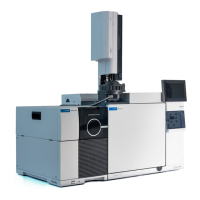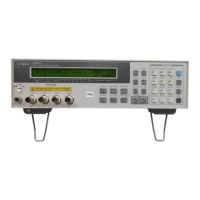176 5977B Series MSD Troubleshooting and Maintenance Manual
6 Vacuum System
Calibration Valves and Vent Valve
Calibration valves
A calibration valve (See Figure 36 on page 177) is an electromechanical valve
with a vial to hold the tuning compound. When a calibration valve is opened,
tuning compound in the vial diffuses into the ion source. EI MSDs have one
calibration valve; CI MSDs have a second calibration valve for the CI tuning
compound. The valves are controlled by the MSD Data Acquisition.
EI calibration valve
The EI calibration valve is held onto the top of the analyzer chamber by
two screws. A small O-ring provides a face seal.
The diffusion pump has a calibration valve with less restriction than that in
the turbo MSD; this allows the correct diffusion of calibrant for each vacuum
system.
Perfluorotributylamine (PFTBA) is the most commonly used tuning
compound for EI operation. PFTBA is required for automatic tuning of the
MSD. Other compounds can be used for manual tuning.
CI calibration valve
The CI tuning compound is perfluoro-5,8-dimethyl-3,6,9-trioxidodecane
(PFDTD). The CI calibration valve is part of the reagent gas flow control
module. It is controlled by the Data Acquisition software. It opens
automatically during CI autotune or manual tuning, allowing PFDTD to diffuse
through the GC/MSD interface and into the ion source.
Vent valve
The vent valve knob (See Figure 37 on page 178) screws into a threaded port
in the front of the calibration valve. An O-ring is compressed between the knob
and the valve to form a seal. The threaded end of the knob has an air passage
inside it, allowing air to flow into the manifold when the knob is partially
unscrewed. If you turn the knob too far, the O-ring can come out of its slot.
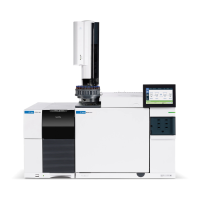
